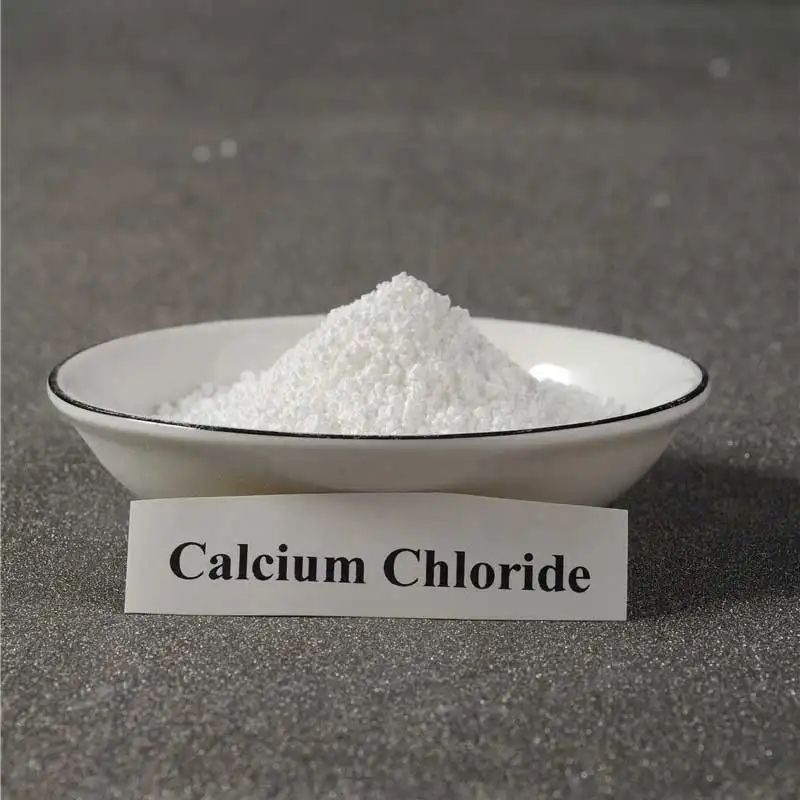Calcium Bromide: Properties, Applications, Safety, and Market Insights
Calcium bromide, a chemical compound with the formula CaBr₂, is a white, hygroscopic crystalline solid that plays a critical role in multiple industries. As a soluble salt derived from calcium and bromine, it exhibits unique chemical and physical properties that make it indispensable in sectors ranging from oil drilling to healthcare. This guide explores everything you need to know about calcium bromide—from its core characteristics to real-world uses, safety protocols, and market trends—helping businesses, researchers, and buyers make informed decisions.
What Is Calcium Bromide? Key Properties to Understand
At its core, calcium bromide is an ionic compound formed by the reaction of calcium carbonate (CaCO₃) or calcium oxide (CaO) with hydrobromic acid (HBr). Its defining properties include:
- Solubility: Highly soluble in water, ethanol, and acetone. Aqueous solutions of calcium bromide are clear and stable, with a high density—up to 1.93 g/cm³ at 20°C. This density makes it ideal for applications requiring heavy brines.
- Hygroscopicity: Calcium bromide readily absorbs moisture from the air, which means it must be stored in sealed containers to prevent clumping or degradation.
- Thermal Stability: It remains stable at moderate temperatures but decomposes at high heat (above 730°C) to release bromine gas and calcium oxide.
- Chemical Reactivity: It forms complexes with organic compounds and reacts with silver nitrate (AgNO₃) to produce a yellow precipitate of silver bromide (AgBr)—a reaction often used to test for its presence.
These properties make calcium bromide versatile, as it can adapt to harsh environments (e.g., high-pressure oil wells) and precise applications (e.g., pharmaceutical formulations).
Top Applications of Calcium Bromide Across Industries
Calcium bromide’s unique traits have made it a staple in several high-demand sectors. Below are its most common uses, aligned with industry needs and search queries:
1. Oil and Gas Drilling: The #1 Use Case
The oil and gas industry is the largest consumer of calcium bromide, primarily for drilling fluid (mud) formulations. Here’s why:
- High Density: Calcium bromide brines (often mixed with calcium chloride) reach densities of 14–18 lb/gal, which is critical for controlling well pressure. This prevents blowouts by balancing the pressure of underground oil or gas reservoirs.
- Corrosion Inhibition: Unlike some other drilling fluids, calcium bromide minimizes corrosion of steel drill pipes and equipment, extending their lifespan and reducing maintenance costs.
- Compatibility: It works well with other additives (e.g., viscosifiers, shale stabilizers) and is safe for use in both onshore and offshore drilling operations.
Offshore drilling, in particular, relies on calcium bromide because its brines are less likely to harm marine ecosystems compared to toxic alternatives.
2. Healthcare: Pharmaceuticals and Medical Imaging
Calcium bromide has a long history in healthcare, though its uses have evolved with modern medicine:
- Anticonvulsant: In the past, it was used to treat epilepsy and seizures due to its ability to calm the central nervous system. Today, it is less common than newer drugs but still used in specific cases where other treatments fail.
- Radiography Contrast Agent: Calcium bromide is an ingredient in some contrast dyes used for X-rays and CT scans. It helps enhance the visibility of internal organs (e.g., the digestive tract) by absorbing X-rays, making abnormalities easier to detect.
- Dental Applications: Dilute solutions of calcium bromide are sometimes used in dental products to reduce inflammation and prevent bacterial growth in gums.
3. Industrial and Manufacturing Uses
Beyond oil and healthcare, calcium bromide supports other industrial processes:
- Fire Retardants: It is added to plastics, textiles, and wood treatments to slow down combustion. Its ability to release bromine gas when heated forms a barrier that suppresses flames.
- Photography: Historically, calcium bromide was used in photographic emulsions to sensitize film to light. While digital photography has reduced this demand, it still has niche uses in analog and specialty photography.
- Metal Processing: It acts as a flux in metal casting, helping to remove impurities from molten metals and improve the quality of finished products (e.g., aluminum, steel).
Safety Guidelines for Handling Calcium Bromide
While calcium bromide is generally safe when used correctly, it poses risks if mishandled. Follow these safety best practices to protect workers, the environment, and equipment:
1. Personal Protective Equipment (PPE)
Always wear:
- Gloves: Nitrile or neoprene gloves to prevent skin irritation (calcium bromide can cause dryness or redness with prolonged contact).
- Eye Protection: Safety goggles or a face shield to avoid eye damage—splashes can cause burning or blurred vision.
- Respiratory Protection: A dust mask or respirator when handling dry calcium bromide powder, as inhalation can irritate the lungs and cause coughing.
2. Storage and Handling
- Sealed Containers: Store calcium bromide in airtight, moisture-resistant containers (e.g., HDPE drums) to prevent hygroscopic clumping. Keep containers away from direct sunlight and heat sources.
- Avoid Incompatible Substances: Do not store near strong acids (e.g., HCl) or oxidizers (e.g., chlorine gas), as this can cause dangerous chemical reactions (e.g., release of toxic bromine gas).
- Spill Response: If a spill occurs, contain the area to prevent runoff. For dry spills, sweep up the powder and dispose of it in a labeled hazardous waste container. For liquid spills, use an absorbent material (e.g., vermiculite) and neutralize with a mild base (e.g., sodium bicarbonate) if needed.
3. Environmental Safety
- Prevent Water Contamination: Avoid releasing calcium bromide into rivers, lakes, or soil. While it is less toxic than other bromides, high concentrations can harm aquatic life.
- Waste Disposal: Follow local regulations for hazardous waste disposal. Do not pour calcium bromide solutions down drains or into public sewage systems.
Calcium Bromide Market: Trends and Buying Considerations
For businesses looking to source calcium bromide, understanding market dynamics is key. Here’s what you need to know:
Market Trends (2024–2030)
- Growing Oil Demand: The global push for energy security is driving demand for oil and gas, which in turn boosts calcium bromide sales. Offshore drilling projects in regions like the Gulf of Mexico and the North Sea are major growth drivers.
- Sustainable Alternatives: Manufacturers are developing low-hazard calcium bromide formulations to meet stricter environmental regulations (e.g., the EU’s REACH directive).
- Asia-Pacific Growth: Countries like China and India are expanding their oil drilling and manufacturing sectors, making the Asia-Pacific region the fastest-growing market for calcium bromide.
Key Buying Considerations
When purchasing calcium bromide, focus on:
- Purity: Industrial-grade calcium bromide typically has a purity of 95–98%, while pharmaceutical-grade requires 99%+ purity. Choose the grade that matches your application (e.g., 99% purity for medical use).
- Form: It is available as a powder, flakes, or aqueous solution. Solutions are easier to handle but have higher shipping costs due to weight; powder is more cost-effective for large-scale orders.
- Supplier Reliability: Partner with suppliers who offer consistent quality, on-time delivery, and compliance with safety standards (e.g., ISO 9001 certification).
Conclusion: Why Calcium Bromide Matters
Calcium bromide is more than just a chemical compound—it is a critical enabler of global industries, from energy production to healthcare. Its unique properties (high density, solubility, stability) make it irreplaceable in applications where safety, efficiency, and performance are non-negotiable. By understanding its uses, safety protocols, and market trends, businesses can leverage calcium bromide to optimize operations, reduce costs, and meet regulatory requirements.
Whether you’re a drilling company needing high-density brines, a pharmaceutical manufacturer developing contrast agents, or a buyer sourcing industrial-grade calcium bromide, this guide provides the insights you need to succeed in a competitive market.






